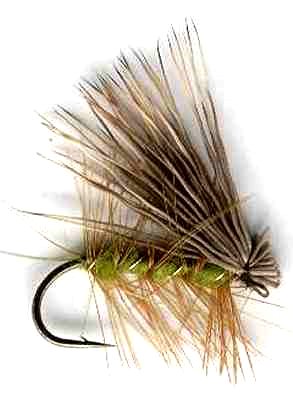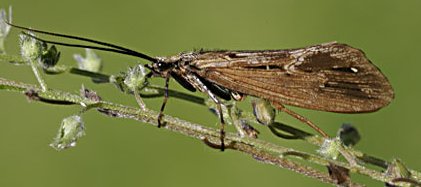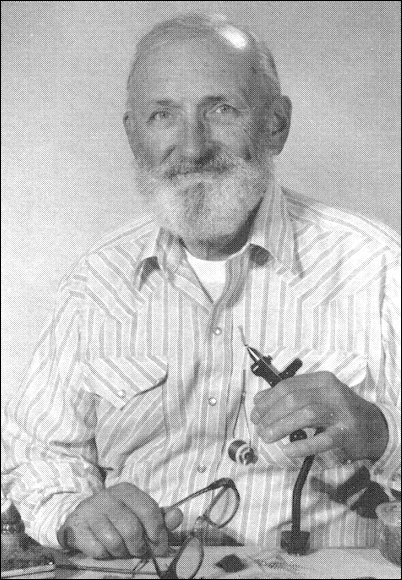Dark Winged Olive Elk Hair Caddis (Sedge) Fly
The tent wing wedge shape of the caddis fly is mimicked by the Dark Winged Elk Hair caddis flyfishing fly pattern when used on a drift past the nose of your target hungry Rainbow or Brown trout.

CADDIS FLY PATTERNS. Hook size 10 12 14 16 18 20 - $US each
The common or slang term ‘sedge’ originates from the fact that adult Caddis flies can often be found clinging to sedge grass near the waters. Sedge/Caddis flies have four wings. The forward pair are normally a little longer than those at the rear. At rest their wings lie close along the body in an inverted V shape. Caddis flies do not have tails but many have long antenna. The Latin name for this group of flies is ‘Trichoptera’. Dark Wing Wing Caddis (Sedge) FlyThey pass through four stages in their development; egg, larva, pupa and adult. The eggs are laid by the adult female in large jelly mass, which often floats on the water surface and drift until they stick to some river side vegetation. Some species lay their eggs directly on vegetation. The eggs hatch into larva in about 10-12 days. The Larvae produce a sticky substance and attach what ever material in on the river bed to their body. This offers protection and camouflage. The pupa stage lasts for several days. The fully formed pupa has middle body legs that it uses to swim to the surface to hatch. Some species choose the shore or vegetation to emerge rather than open water where they are easy prey for the trout.
Adult caddis flies vary in size. Their bodies are rather drab in color from gray, brown to green. The wings are mottled, patterned or pale and vary in color from black, brown to gray. If the fish are not taking fly patterns of natural colors try a brightly colored attractor pattern of the correct shape. Most hatch early or late evening. Some hatch in the afternoon and some at night. The fish have two chances of catching these flies; when they emerge and when they return to lay eggs. Some species have a problem drying their wings and remain on the surface for a considerable time, causing a disturbance. Others that move to shore to hatch fully also cause a disturbance.

love fishing for trout just before dusk and after during the dark twilight hours. If you are lucky you can practice two types of fishing, one after the other. Just before dusk you can fish for trout feeding on the spent female egg laying mayfly spinners and the male spinners exhausted after mating now floating on the water surface. As it gets dark the caddis hatch starts. This is the time to change flies from a spent spinner fished in a drag free dead drift to a Dark Winged Olive Elk Hair Caddis dry fly. When the rise appears to be over and there is hardly any activity noticeable on the water surface all of a sudden you will hear a splash out there in the darkness. Then you hear another splash followed by a boil of activity. That is the sound of the Caddis hatch starting and attracting the attention of the waiting trout.
After peering into the darkness to try and spot rising forms and using my ears to detect the location of the disturbance on the water surface I cast repeatedly to that area. I float the Dark Winged Olive Elk Hair Caddis over the feeding fish, then give it a little twitch and finally drag it over the water surface, mimicking a newly hatched caddis trying to take off for the first time, before retrieving the line. At any time you can expect a take.

Fly Fisherman Al Troth designed the popular Elk Hair Caddis dry fly


